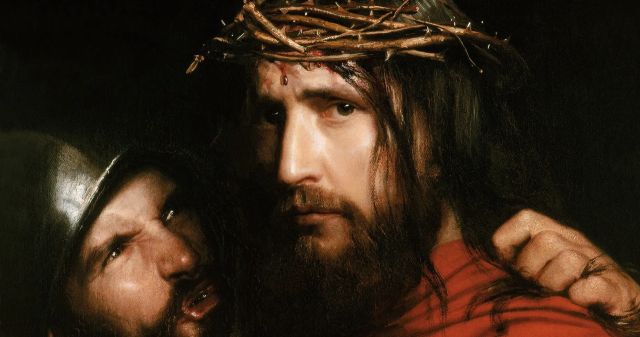Here is a collection of reliable resources to supplement your study of Isaiah 50–57 . FAIR Resources link to relevant questions which have been answered on the FAIR website. Other Resources link to resources outside of FAIR that are trustworthy and helpful. Under Church Resources you’ll find links to the different Come, Follow Me manuals, as well as other helpful links as applicable. Also on the page are the lesson summary and a guest scholar’s article. This week’s article is by Kerry Muhlestein and is titled Poetic Parallelism and Seeing Some Missed Meanings in Isaiah.

The Latter-day Saint perspective on the atonement of Jesus Christ
The Sariah Dilemma: Finding Increased Faith When Our Children Misplace Their Own
Find Answers on FAIRLATTERDAYSAINTS.ORG

Lesson Summary
Throughout his ministry, Isaiah spoke of a mighty deliverer (see, for example, Isaiah 9:3–7). These prophecies would have been especially precious to the Israelites centuries later when they were in captivity in Babylon. Someone who could topple the walls of Babylon would be a mighty conqueror indeed. But that isn’t the kind of Messiah that Isaiah described in chapters 52–53: “He is despised and rejected of men; a man of sorrows, and acquainted with grief: and we hid as it were our faces from him. … We did esteem him stricken, smitten of God, and afflicted” (Isaiah 53:3–4). By sending such an unexpected deliverer, God taught us about true deliverance. To save us from oppression and affliction, God sent One who Himself “was oppressed, and … afflicted.” Where some expected a lion, He sent a lamb (see Isaiah 53:7). Surely, God’s ways are not our ways (see Isaiah 55:8–9). Jesus Christ frees us not by just opening the prison but by taking our place there. He relieves us from our chains of grief and sorrow by bearing them Himself (see Isaiah 53:4–5, 12). He does not save us from a distance. He suffers with us, in an act of “everlasting kindness” that “shall not depart from thee” (Isaiah 54:8, 10).

Poetic Parallelism and seeing some missed meanings in Isaiah
Chiasmus in Isaiah
For this week’s readings, there are two reasons we should understand Isaiah’s use of parallelism, especially its most complex form: the chiasmus. Therefore, in this week’s essay I will share an excerpt about parallelism from my commentary Learning to Love Isaiah, then highlight something about a large and hitherto unpublished chiasmus, and then share an excerpt about a small chiasmus and an important meaning behind the verses in which it is found. These verses are oft quoted, but sometimes we miss an important element of their meaning.
Excerpt about Paralellism
“Isaiah also uses a common literary device of his day known to us as parallelism. He employs this device more than 1000 times and is probably better at employing it than any other writer in history. Parallelism is when words, phrases, or ideas are used in tandem with each other to add emphasis and to clarify meaning.
. . .
“One of the richest and most complex forms of parallelism is known as a chiasmus. This form of parallelism starts with an idea, then works to a central point, then works its way back out again. Thus, the first and last elements are the same, the second and second to last are the same, and so on. Isaiah contains some large, masterful chiasms that span chapters, as well as small ones that are contained within a verse. Nearly every chapter contains some kind of chiasmus. We will mention only a few in this book and will reveal a very large one, which I think has been hitherto unnoticed (see Isaiah 40–57)” (Learning to Love Isaiah), p. 7.
The Center Point is Christ
One of the reasons we want to make sure we understand how Isaiah uses the chiastic form of poetry is because in this week’s reading we are finishing a large, beautiful, and complex chiasmus. It spans 18 chapters, from chapter 40 through chapter 57. It’s center point, and thus its central focus, is that God will save His covenant people, and that He will send a servant to help save them. That theme is found in chapters 48 and 49, which are the 9th and 10th chapters of the chiasmus, and help us see what the major focus of this entire section is. The overarching theme, as presented in the beginning and ending chapters (chapters 40 and 57) is that everyone is asked to make the covenant, but deliverance only comes to those who make and keep a covenant with God.
The major themes carried throughout the chiasmus include “1) The world cannot deliver. 2) God can and will deliver. 3) One must be keeping their covenant with God to be delivered. 4) If one is not keeping their covenant, God will humble you so that you will. 5) The covenant is available to all. 6) God will send servants to help accomplish the deliverance” (Learning to Love Isaiah, p. 331).
Since this week’s readings include the end of this chiasmus, it will be helpful for most readers to look for the overall covenant and salvation motif, and all of the themes noted above as they do their reading.
Excerpt from Commentary – A Message we Often Miss
Isaiah 55:8-9 is fairly well known. Yet I believe there is an important message in these verses we often miss. I hope that my commentary for these verses will be of help:
“The weighty message God now wishes to convey is carried out in the chiasmus formed in verses 8 and 9. The message of these verses is deeply profound and plays out in several ways, some of which will be addressed in the following verses. The overall meaning is incredibly important, for we must realize that the sophistry of the world, and the echo chambers of our individual and collective minds that seem so convincing, are really nothing compared with God’s understanding. The world can make its ideas seem very compelling, and the pointing, mocking fingers of the world’s values and philosophies and ways can be extremely powerful. But in the end, all they represent are less-than-childish thoughts when compared with God’s. We would do well to remember this when the world makes “compelling” arguments that seem to contradict what God and His prophets have counseled. We will be better off if we remember this when the things God asks of us don’t seem to make sense to us. This concept is something CFM suggests we ponder.
“We should also recognize the immediate textual context. In verse 7, the Lord says that He will forgive anyone who returns to Him. Verse 8 begins with a conjunction that denotes causation, meaning that verse 8 is the reason for verse 7. Thus, God is saying that the reason He forgives so abundantly is because He sees things we do not, He knows things we do not, He understands things we do not. It seems He is saying that because He knows things about us that we don’t know, and because He sees our future and potential in ways that we can’t, He abundantly pardons and forgives. This should give us great courage and hope and simultaneously encourage us to forgive others” (Learning to Love Isaiah, p. 450-451).
More Come, Follow Me resources here.

Kerry received his B.S. from BYU in Psychology with a Hebrew minor. He received an M.A. in Ancient Near Eastern Studies from BYU and his Ph.D. from UCLA in Egyptology, where in his final year he was named the UCLA Affiliates Graduate Student of the Year. His first full time appointment was a joint position in Religion and History at BYU-Hawaii. He is the director of the BYU Egypt Excavation Project. He has been teaching about Isaiah for almost three decades and has been teaching classes specifically on Isaiah for several years, and has written a verse-by-verse commentary on Isaiah. He and his wife, Julianne, are the parents of six children, and together they have lived in Jerusalem while Kerry has taught there on multiple occasions. His 2022 FAIR Conference presentation on “Keys to Understanding Isaiah” can be viewed here.
